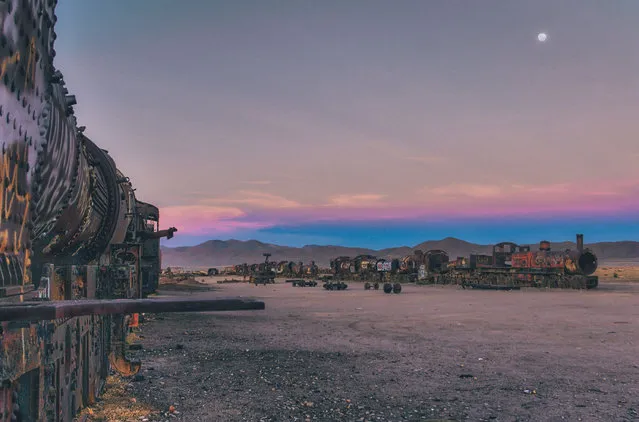
Chris Staring photographs a mysterious train graveyard in the heart of southern Bolivia, where the skeletons of British steam locomotives and rail cars rust away on the edge of the world’s largest salt flats. More than 100 rail cars and locomotives can be found in different states of decay in the train graveyard. (Photo by Chris Staring/Rex Features/Shutterstock)
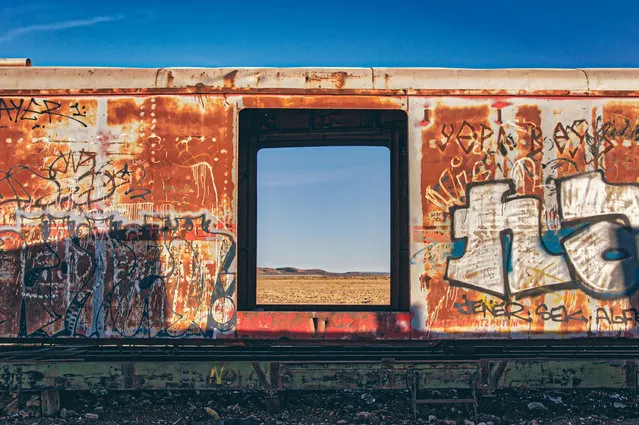
Melbourne-based photographer Chris Staring captured a series of stunning photos of the train graveyard, known locally as the Cementer de Trenes. (Photo by Chris Staring/Rex Features/Shutterstock)
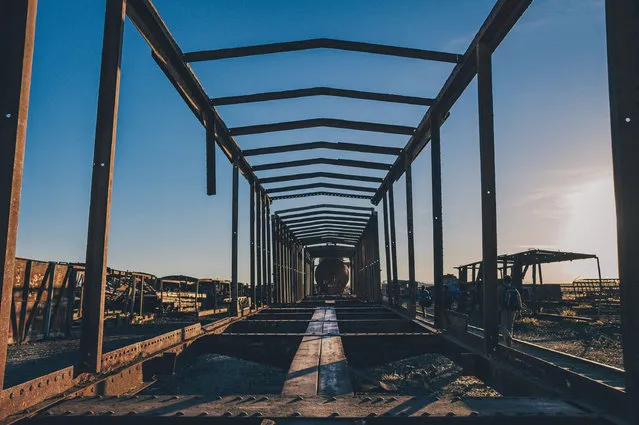
The graveyard is a stretch of disused track two miles south-west of Uyuni, Bolivia. (Photo by Chris Staring/Rex Features/Shutterstock)
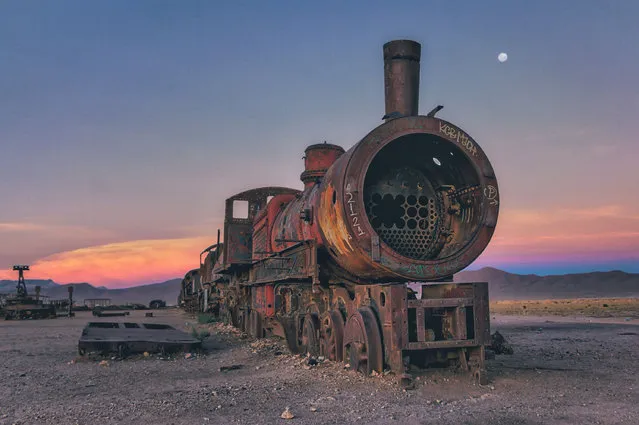
Many of the trains and locomotives are British imports and have been eroded by the harsh Bolivian climate. (Photo by Chris Staring/Rex Features/Shutterstock)
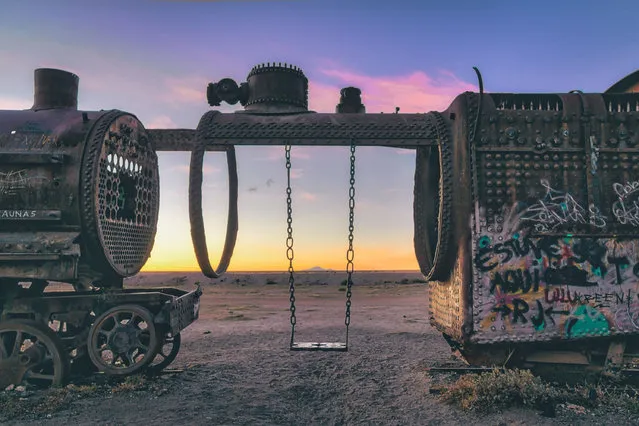
A swing inside the shell of an old locomotive. (Photo by Chris Staring/Rex Features/Shutterstock)
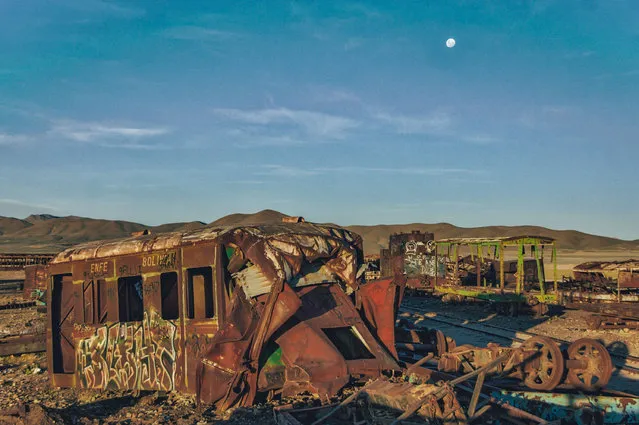
Staring said: “Most of the 19th-century steam locomotives were imported from Britain so only designed and built for the British climate”. (Photo by Chris Staring/Rex Features/Shutterstock)
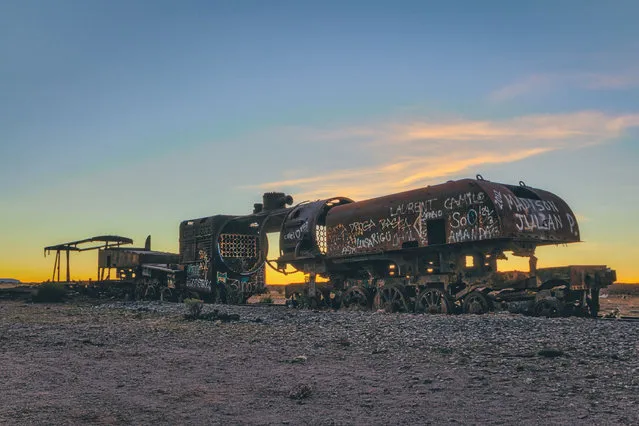
“Although built to withstand harsh weather conditions, the locomotives proved to be no match for the challenging conditions that they found themselves in while chugging their way through the high altitudes, thin air, corrosive salty winds and extreme temperatures in Bolivia and Chile”. (Photo by Chris Staring/Rex Features/Shutterstock)
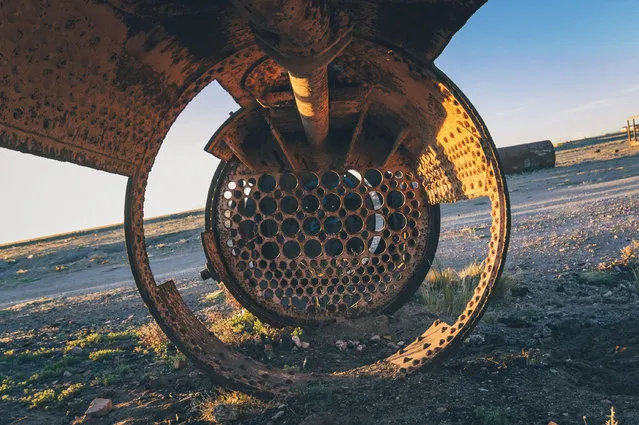
“One fatal oversight can attribute for the high number of dented and twisted locomotives and rail cars that can be found in the train graveyard. The steam locomotives were being operated at more than 3,500 metres above sea level, which is a far higher altitude than they were designed for”. (Photo by Chris Staring/Rex Features/Shutterstock)
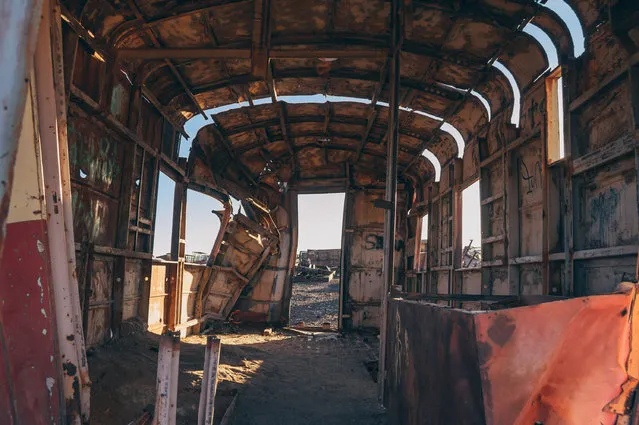
“This increase in altitude lowered the boiling point of the water in the engines from 100 degrees to about 98 degrees, which meant the engines would literally run out of steam and derail”. (Photo by Chris Staring/Rex Features/Shutterstock)
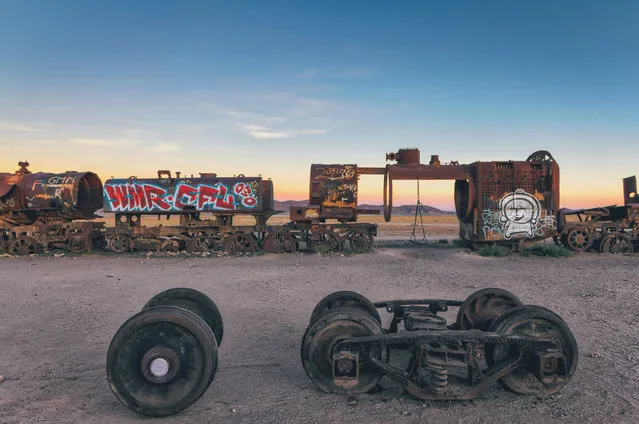
Nowadays, most of the locomotives and train cars have been stripped bare for scrap metal and parts, some vandalised and others turned into swings to provide a memorable photo op for passing tourists. (Photo by Chris Staring/Rex Features/Shutterstock)
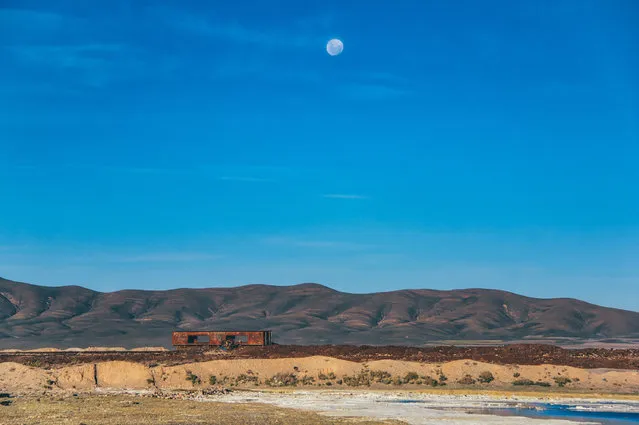
The graveyard’s location on the edge of the Bolivian salt flats accelerates the corrosion of the trains. (Photo by Chris Staring/Rex Features/Shutterstock)
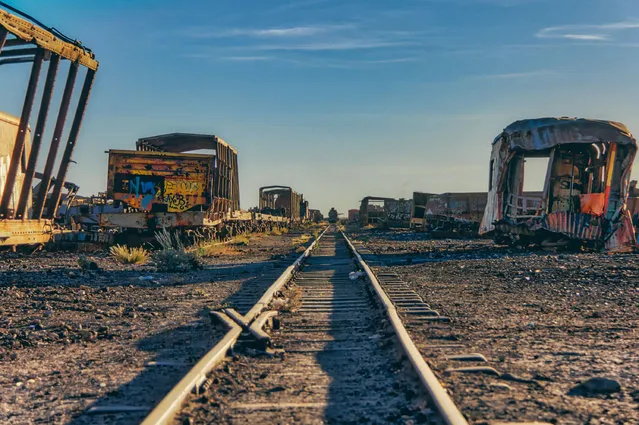
Rusting rail cars and train skeletons are pictured against striking skies. Staring ventured out to explore the area a few hours before sunset. (Photo by Chris Staring/Rex Features/Shutterstock)
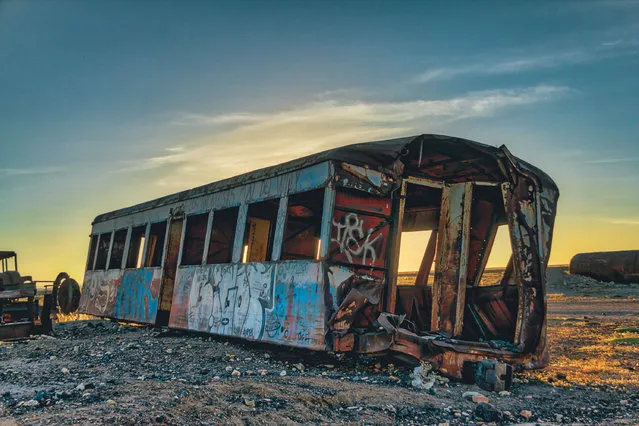
Staring said: “The sunset was spectacular and the sky exploded with the most intense colours I’ve ever seen. I stayed for a few hours to watch the sunset, climb around the rusting carcasses and taking as many photos as I could before walking back to town in the dark”. (Photo by Chris Staring/Rex Features/Shutterstock)
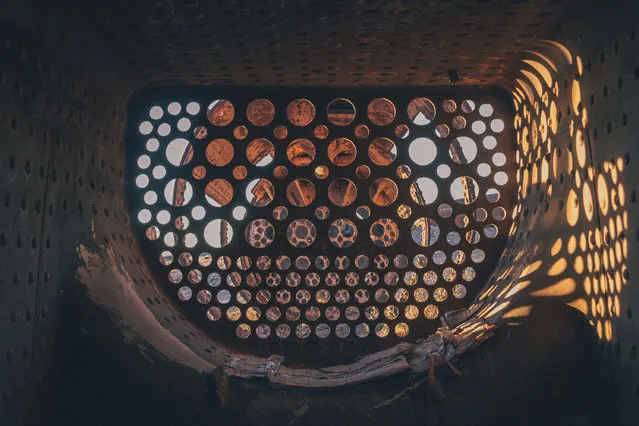
Looking out from inside one of the disused steam engines. (Photo by Chris Staring/Rex Features/Shutterstock)
03 Jul 2016 10:46:00,
post received
0 comments
